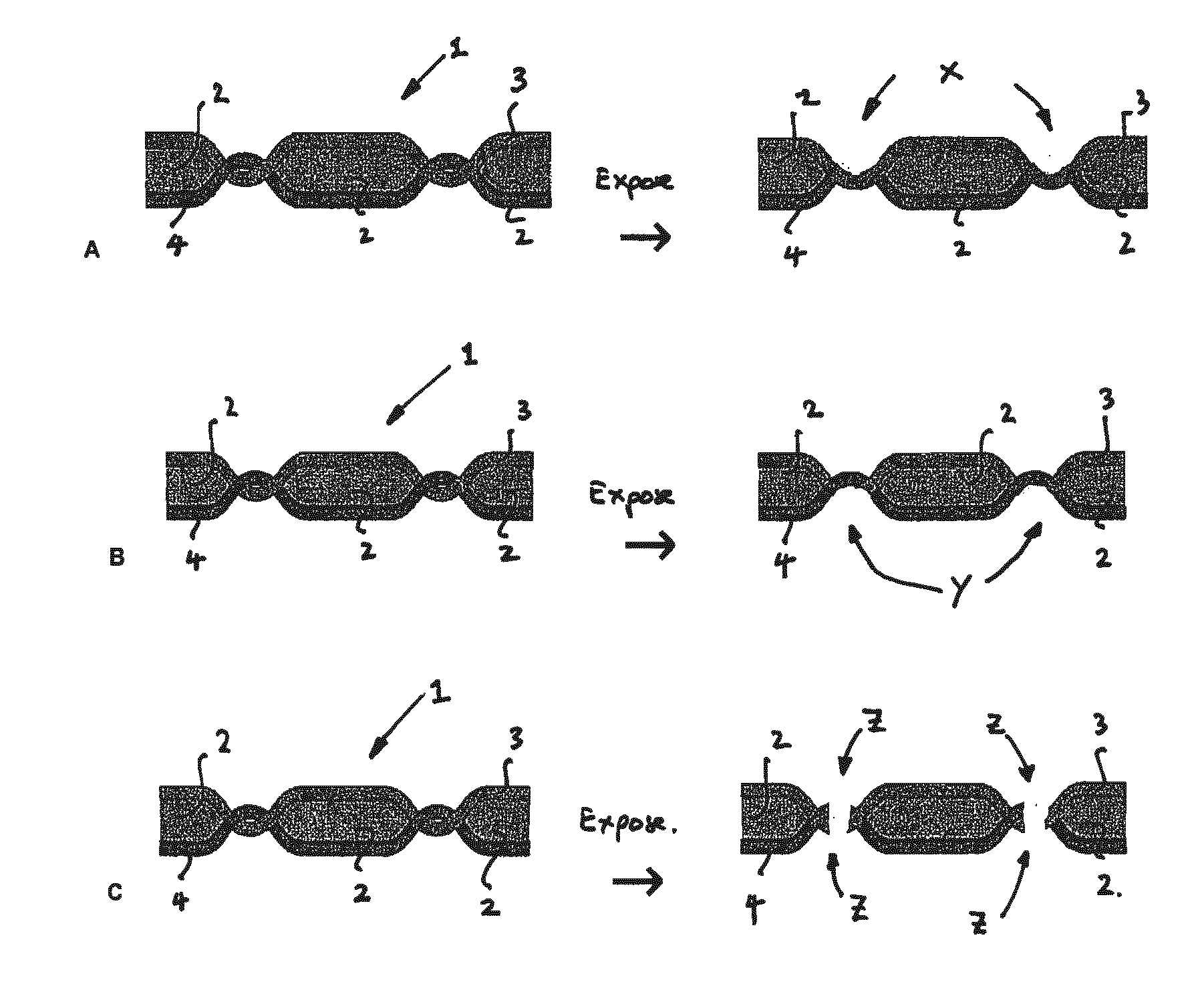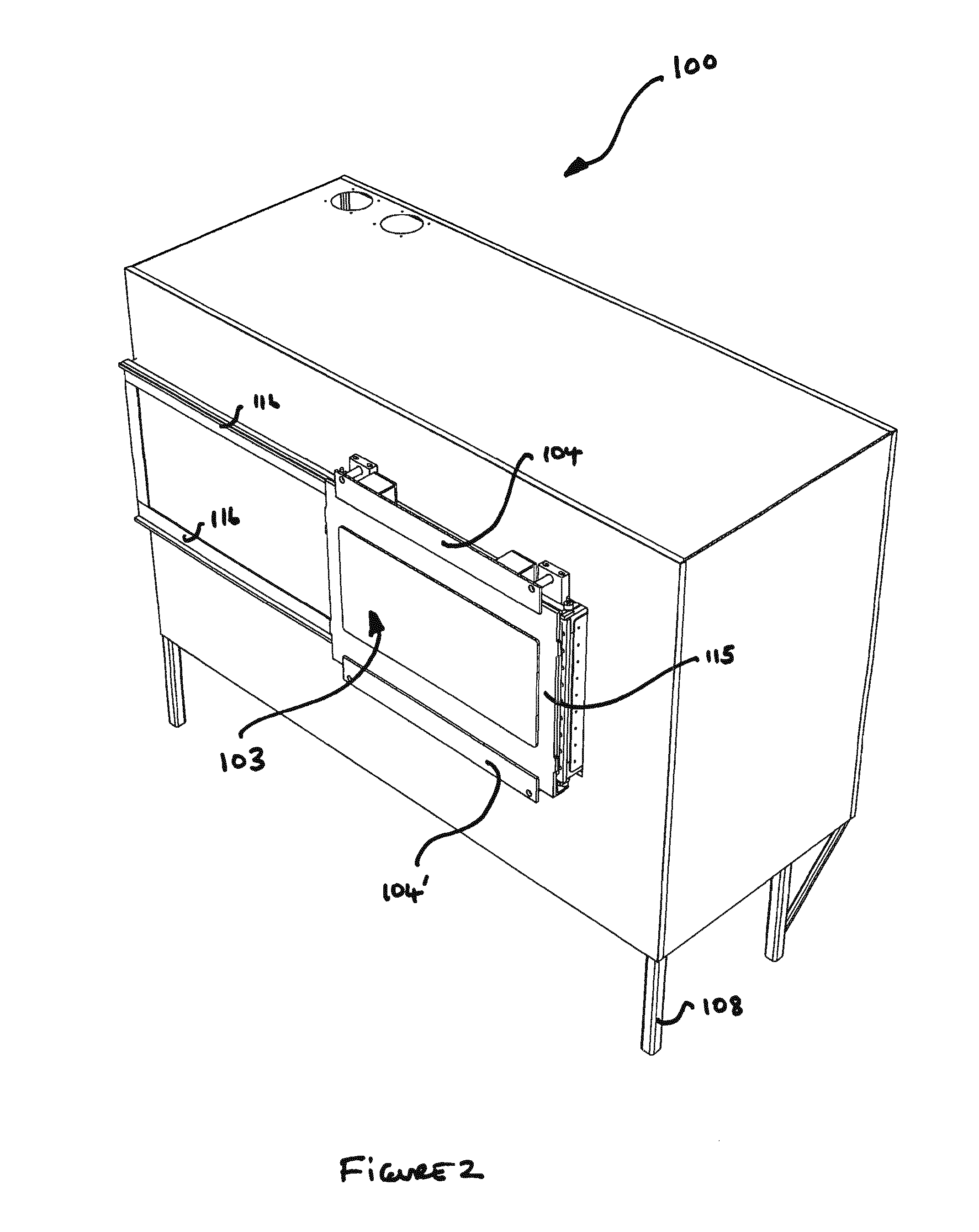Article assembly disassembly system
a technology for disassembly and assembly of articles, applied in the field of articles assembly and disassembly systems, can solve the problems of large number of textile based articles, which have been assembled from multiple components, and are difficult to recycle into useful products and/or be reused at the end of their useful or expected life, and many garments are difficult to recycle, so as to simplify general cleaning and prevent accidental damage. , the effect of preventing dust contamination
- Summary
- Abstract
- Description
- Claims
- Application Information
AI Technical Summary
Benefits of technology
Problems solved by technology
Method used
Image
Examples
example 1
[0087]Various samples of embroidered logos, sewing yarns and backing fabric were obtained from Mathias & Sons Ltd. A yarn blend of Kevlar® / Acrylic and 50 micron steel wire (Dualtec® AISI 304L) was supplied by Saveguard Ltd, UK. Various article arrangements were prepared with this yarn and other yarns and the samples were subsequently exposed to microwave radiation in a microwave oven, (model Cookworks MM717CKA 700 Watt). The samples and conditions are as follows:[0088]a) Metallic yarn, Dualtec AISI 304L was passed through an embroidered logo from rear side using hand stitching needle. The sample was exposed to microwaves for 10-20 seconds.[0089]b) Fabric sample sewn using a lockstitch with Dualtec AISI304L50 (incorporates 50 ∥m diameter steel yarn) as the understitch and 100% PET sewing yarn as the upper thread. This sample was exposed to microwaves for 5 seconds.[0090]c) Backing fabric lock stitched using Dualtec AISI304L50 as the understitch and 100% PET sewing yarn as upper threa...
example 2
[0094]A commercially available yarn, Thunderon®, (Nihon Sanmo Dyeing Co., Ltd), was used to form a stitch based connection means for various textile based articles. Thunderon® is an acrylic or polyamide fibre or filament that contains a chemically bonded layer of copper sulphide. The fibre diameter is ˜4 μm, the thickness of its conductive layer is 300-1000 Å (angstroms) and it has a specific resistivity of 10−2-100Ω.cm. A 110 dtex polyamide Thunderon® yarn was used as the bobbin thread in 301 lock stitch and 406 construction cover stitch to manufacture various garments, such as shirts, trousers, T-shirts, and jackets.
[0095]The prepared samples with interlock and overlock seams produced with
[0096]Thunderon® monofilament yarn had similar seam strengths to samples stitched with standard threads. The seam strength of seams containing Thunderon® yarn was similar to the standard samples. Five shirts and five pairs of trousers were successfully produced using commercial garment assembly t...
example 4
[0100]Polyamide multifilament yarns containing a layer of copper sulphide were obtained with linear densities of 121 dtex / 24F (filaments) and ca. 110 dtex / 24F.
[0101]The specific resistance of these yarns was ca. 10−1-10−2Ω.cm and the filament tenacity was ca. 4.5 g / den (grams per denier). The yarn strength enabled these yarns to be utilized directly in sewing operations without end breakages. However, to facilitate high speed sewing or embroidery operation as well as provide a means of modifying the colour and appearance of the yarn, plied yarn assemblies were constructed. Using a hollow spindle up-twisting machine the 110 dtex / 24F yarn was twisted with a 50 dtex textured polyester yarn in both the S-direction and Z-direction to produce a double-covered yarn assembly of balanced twist. A yarn linear density of 50 dtex was approximately the minimum required to satisfactorily disguise the core yarn component during the twisting operation. Thus, by twisting two or more additional yarns...
PUM
| Property | Measurement | Unit |
|---|---|---|
| frequency | aaaaa | aaaaa |
| frequency | aaaaa | aaaaa |
| frequency | aaaaa | aaaaa |
Abstract
Description
Claims
Application Information
 Login to View More
Login to View More - R&D
- Intellectual Property
- Life Sciences
- Materials
- Tech Scout
- Unparalleled Data Quality
- Higher Quality Content
- 60% Fewer Hallucinations
Browse by: Latest US Patents, China's latest patents, Technical Efficacy Thesaurus, Application Domain, Technology Topic, Popular Technical Reports.
© 2025 PatSnap. All rights reserved.Legal|Privacy policy|Modern Slavery Act Transparency Statement|Sitemap|About US| Contact US: help@patsnap.com



